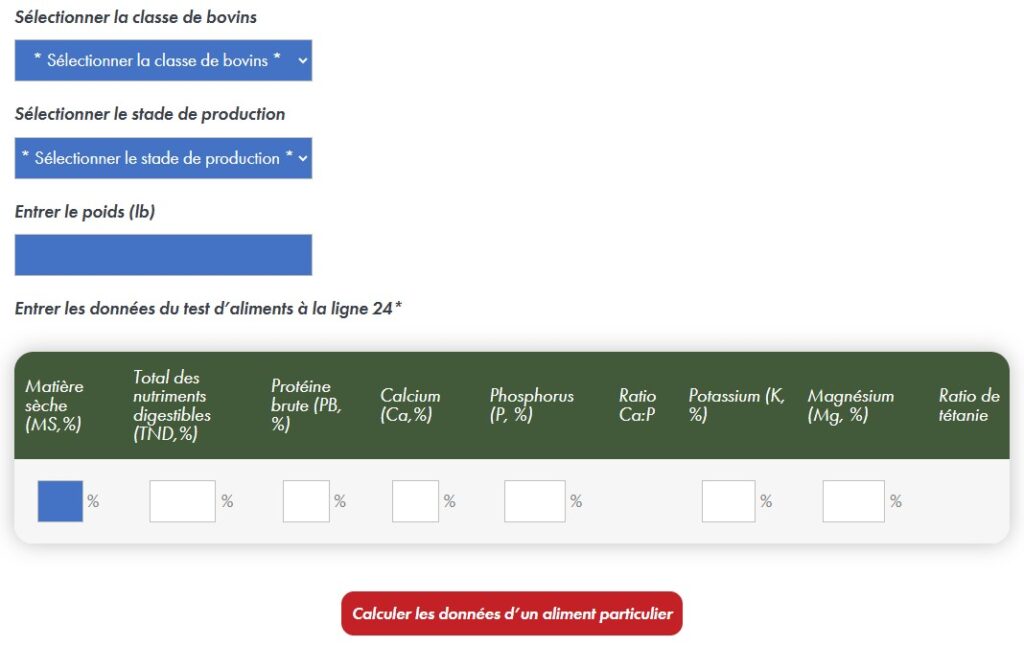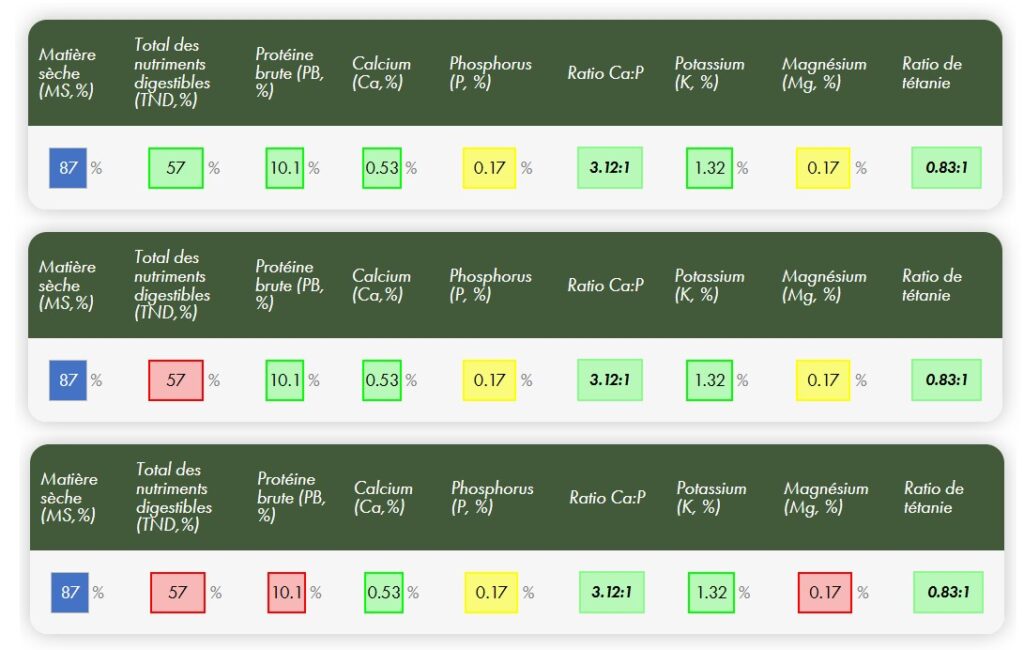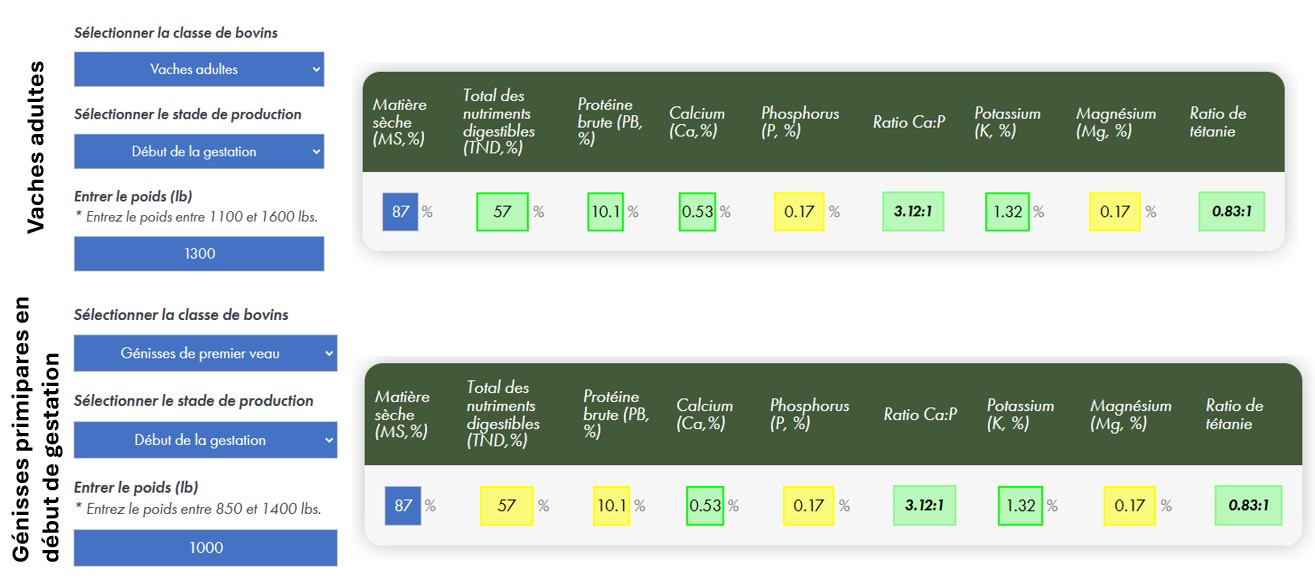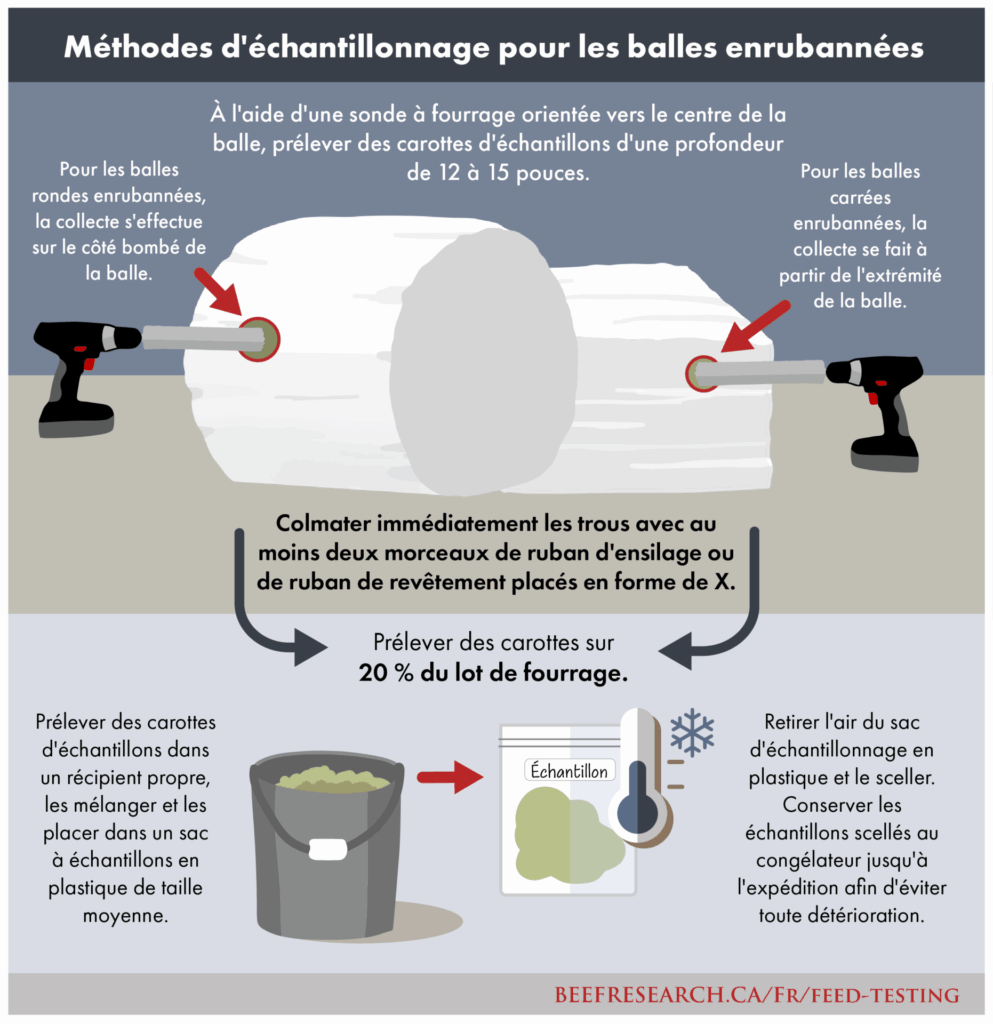Ne prenez pas de risques avec la qualité du fourrage : nourrissez vos animaux selon un plan bien établi

Tous les fourrages ne sont pas identiques, et toutes les vaches d’un troupeau bovin ne présentent pas les mêmes besoins nutritionnels. En adaptant stratégiquement la qualité du fourrage aux besoins nutritionnels du troupeau tout au long de l’année de production, un éleveur bovin peut réaliser des économies et augmenter sa productivité. Mais voici la clé : vous ne pouvez pas y parvenir simplement en observant le fourrage.
Même si le fourrage semble de bonne qualité, cela ne signifie pas nécessairement qu’il l’est. Le foin qui sent bon et qui semble vert peut tout de même manquer de protéines. L’ensilage qui a été récolté au bon degré d’humidité et de maturité peut ne pas fermenter correctement s’il n’est pas entreposé adéquatement. Et lorsque la qualité du fourrage est médiocre, cela entraîne des répercussions sur votre troupeau bien avant que vous ne vous en rendiez compte.
Commencez par un test sur les aliments
La qualité du fourrage varie en fonction de la variété, du degré de maturité, des conditions météorologiques et des méthodes de récolte. Que vous nourrissiez vos animaux avec du fourrage herbacé, de la luzerne, de l’ensilage ou un mélange de ces produits, un simple test du fourrage vous permettra de connaître sa teneur en nutriments tels que les protéines brutes (PB), les fibres, l’énergie, l’humidité et les minéraux. Des tests plus spécialisés peuvent également inclure des résultats concernant le pH, les protéines non dégradables, les nitrates, les toxines, la valeur alimentaire relative (VAR) et d’autres paramètres.
Bien que les tests des aliments constituent un outil important dans la gestion de l’alimentation animale, leur efficacité dépend de la qualité des échantillons prélevés. Il est donc essentiel de suivre les méthodes d’échantillonnage recommandées afin de garantir que les échantillons sont représentatifs des fourrages testés.
Que révèlent les chiffres ?
Les résultats d’un test sur les aliments pour animaux sont remplis de chiffres et d’acronymes qui peuvent prêter à confusion à première vue.
L’outil d’évaluation des résultats des tests d’aliments du BCRC vous permet de saisir certaines de ces données afin d’évaluer si cet aliment répondra aux besoins nutritionnels de base de certaines catégories de bovins à différents stades de production dans des conditions normales. Les résultats peuvent vous alerter sur des problèmes potentiels liés à certains ingrédients alimentaires ; toutefois, il est recommandé de demander conseil à un nutritionniste qualifié ou d’utiliser le logiciel d’équilibrage des rations CowBytes pour élaborer une ration équilibrée pour toutes les catégories de bovins ou pour évaluer les ingrédients lors de l’engraissement des veaux et du développement des génisses.
Cet outil comprend quatre étapes simples :
Étape 1 : Sélectionnez la catégorie de bovins que vous nourrissez : les options sont les génisses primipares, les vaches adultes et les taureaux adultes.
Étape 2 : Sélectionnez le stade de production pour la catégorie de bovins.
Étape 3 : Entrez le poids moyen en livres des bovins que vous nourrissez.
Étape 4 : Saisissez les résultats de vos tests d’aliments sur la base de la matière sèche, en commençant par la matière sèche (% MS).
Cliquez sur « Calculez les données d’un seul aliment » pour obtenir vos résultats.
Figure 1 : Données pour l’outil d’évaluation des résultats des tests sur les aliments.

AUne réponse codée par couleur indique si l’aliment convient aux bovins que vous avez sélectionnés :
- Vert indique que les nutriments sont suffisants pour répondre aux besoins nutritionnels.
- Jaune se situe à +/- 2,5 % des besoins en NDT, à +/- 5 % des besoins en BP et à 0,05 % en deçà des besoins en minéraux.
- Rouge indique que l’aliment ne répond pas aux besoins des animaux.
Savoir si un seul aliment répondra aux besoins d’un groupe spécifique de bovins peut aider à répartir les ressources alimentaires tout au long de l’année.
Prenons un exemple concret :
Supposons que vous disposiez d’un foin de bonne qualité contenant 57 % de NDT, 10.1 % de PB, 0.53 % de Ca, 0.17 % de P, 0.17 % de Mg et 1.32 % de K. L’objectif est de nourrir avec ce foin des vaches à viande adultes de 1 300 lb tout au long du cycle de production.
Figure 2 : Résultats d’adéquation du foin de graminées pour des vaches de boucherie de 1 300 lb en début de gestation, en mi-gestation, en fin de gestation et en lactation.

D’après les résultats présentés dans la figure 2, ce fourrage répond aux besoins spécifiques des vaches à viande de 1 300 lb en début et en milieu de gestation. Cependant, lorsque nous évaluons cet aliment pour la même vache à viande en fin de gestation, ses besoins énergétiques ne sont plus satisfaits. De même, pendant la lactation, lorsque ses besoins en protéines et en énergie sont les plus élevés, ce fourrage ne fournit pas suffisamment de ces nutriments.
Par conséquent, vous pourriez envisager d’allouer ce fourrage aux vaches adultes en début et en milieu de gestation et de leur donner un fourrage de meilleure qualité ou de leur fournir des compléments alimentaires en fin de gestation et pendant la lactation.
Nous pouvons développer cet exemple et supposer que nous nourrissons également un groupe de génisses primipares. En raison de contraintes liées aux installations et à la main-d’œuvre, nous souhaitons nourrir ce groupe en même temps que les vaches adultes en début et en milieu de gestation. Cependant, d’après les résultats présentés dans la figure 3, le fourrage herbacé ne répond pas aux besoins énergétiques et protéiques des génisses primipares, ce qui signifie que ce groupe manque de nutriments. Dans cette situation, il est recommandé d’envisager d’autres options d’alimentation ou de séparer ces deux groupes de bovins afin de garantir que leurs besoins nutritionnels soient satisfaits.
Figure 3: Résultats d’adéquation du fourrage herbacé pour les vaches à viande adultes et les génisses primipares en début de gestation.

Les exemples ci-dessus peuvent aider un producteur de bœuf à déterminer si le fourrage herbacé convient aux besoins des vaches à viande adultes et des génisses primipares. À partir de là, vous avez une idée de la manière de répartir ces fourrages et de travailler avec un nutritionniste ou CowBytes pour formuler des rations équilibrées.
Pas de place à l’improvisation — nourrissez vos animaux selon un plan
La nutrition stimule la reproduction et la productivité. Deviner ce que contiennent les fourrages que vous donnez à manger vous fait perdre de l’argent et nuit à la performance.
Le partage ou la réimpression des publications du BCRC sont les bienvenus et sont encouragés. Veuillez mentionner le Beef Cattle Research Council, fournir l’adresse du site Web, www.BeefResearch.ca, et nous faire savoir que vous avez choisi de partager l’article en nous envoyant un courriel à [email protected].
Vos questions, commentaires et suggestions sont les bienvenus. Contactez-nous directement ou lancez une discussion publique en publiant vos idées ci-dessous.

